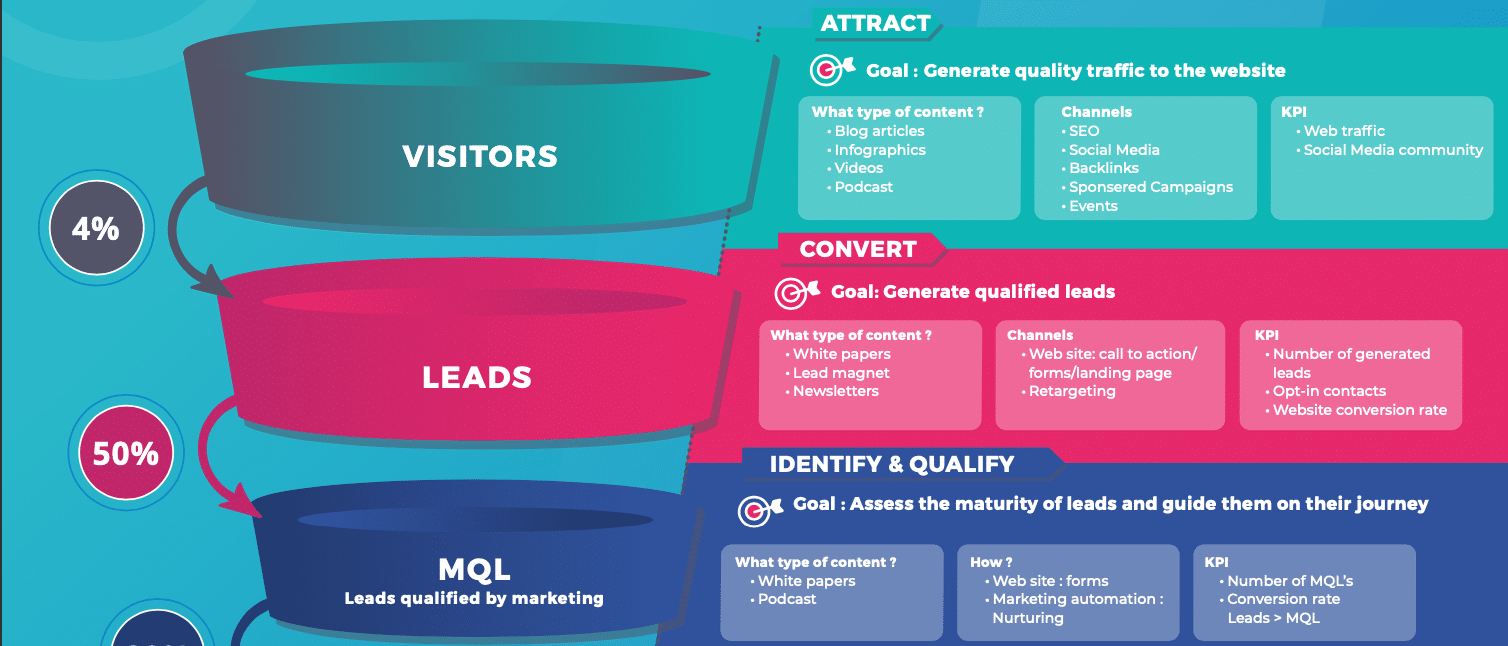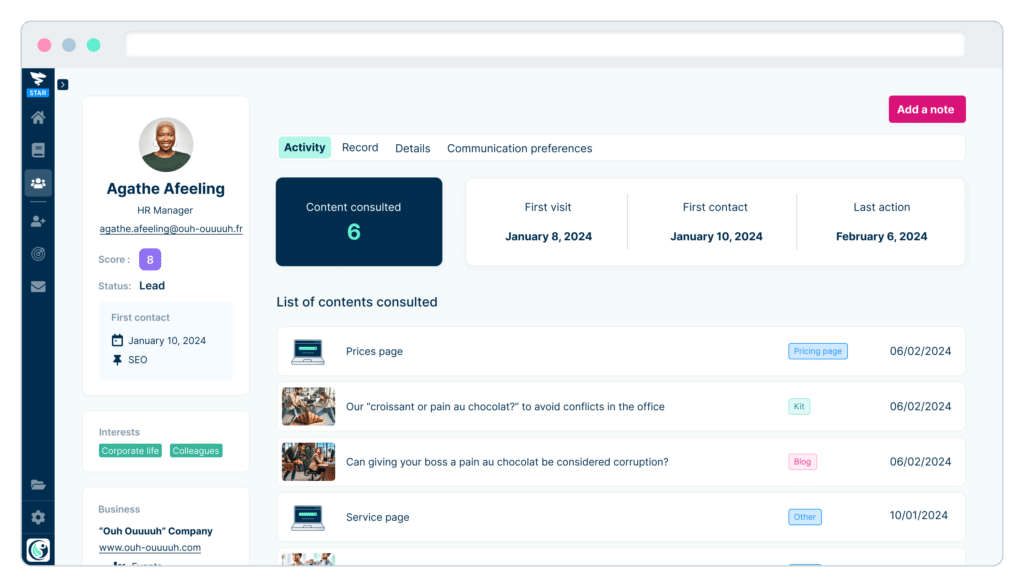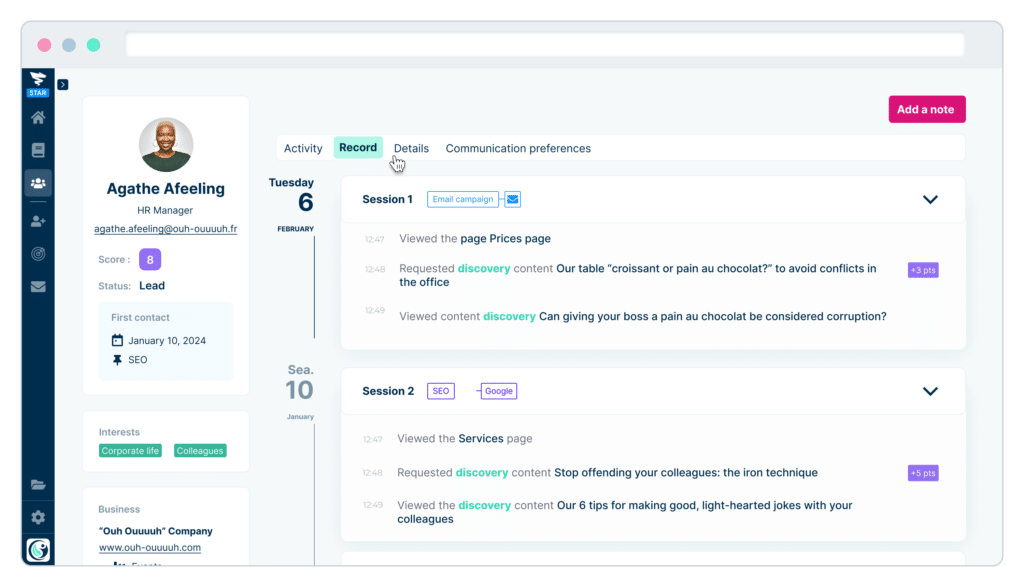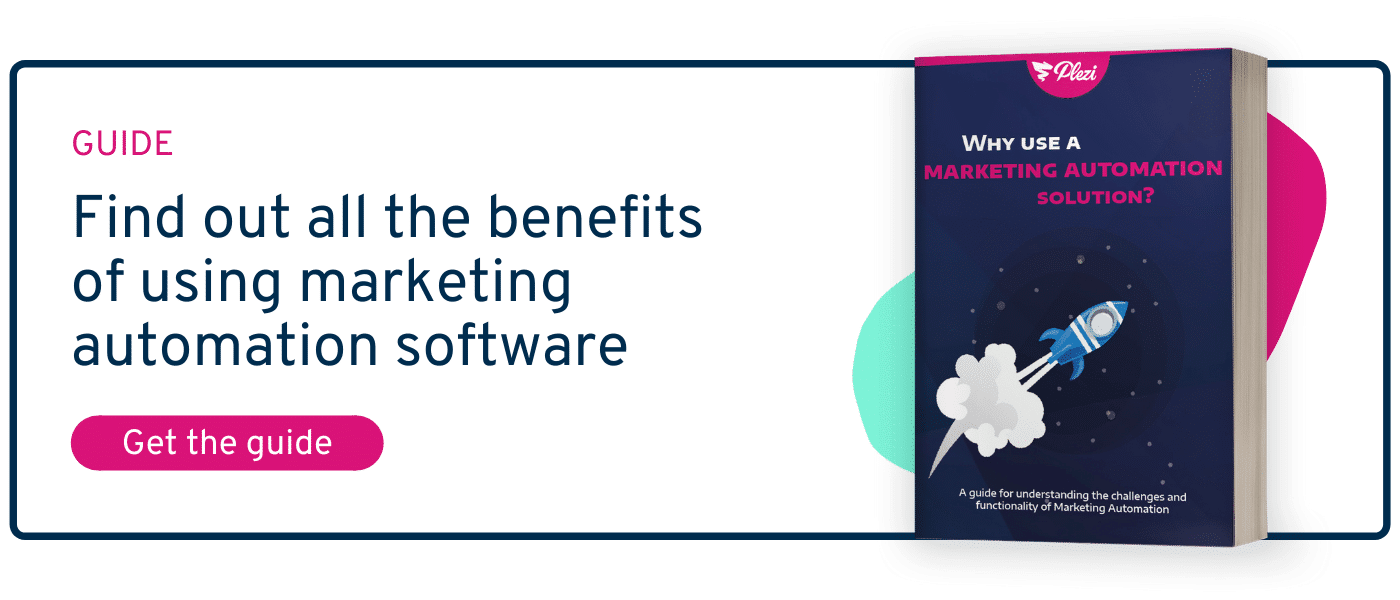For those of you who are unleashed into the world of marketing automation, the new set of terms can quickly be a little scary: MQL, SQL, lead generation, opportunities, deals … And each has its own definition. So, we rolled up our sleeves to offer you the most educational guide possible to certain essential concepts.

- A definition.
- The practical elements that will help you identify what an MQL is
- The best practice to help you build your conversion rate
1. MQL: a definition
A first-time visitor to your site, or your blog, is unknown. You don’t know anything about them, their business, their needs, or quite what they’re looking for. The majority of your visitors probably don’t move on from this stage and that’s perfectly normal.
Some visitors, on the hand, can stand out, by visiting several pages on your site, reading your articles, signing up for your newsletter, downloading a white paper…with this, they give you their email address, and, with that, you have prospected a ‘lead’.
To turn this ‘lead’ into a ‘Marketing Qualified Lead’, your B2B marketing actions come in to play. You need to assess what the lead’s interests are and when the best moment to send that lead to the sales team is.
An ‘MQL’ is ultimately a prospect that has been fed by the different marketing activities of your team. You need to understand what pages they have visited on your site and the information the marketing teams has (business, function, need). If it appears that they are also interested in your product.

What does an MQL actually look like?
The two signs to look out for
We’ll come back to it, but bear in mind that the definition of an MQL can vary enormously from one company to another, especially in B2B. This is normal: depending on your target or your industry, certain criteria may have more or less importance.
Lot’s of techniques are available to identify an MQL. For Plezi, we prefer personas, which means we can identify our potential customers in advance and create content likely to attract them. By creating landing pages, articles and webinars which tailor to your target market needs, you are likely to bring interested prospects to you more quickly.
Whatever technique you prefer – there are a couple of things you want to look out for:
- The prospect must correspond to your persona – the company is in your target market, and it is the right job profile (you may already have this information, or you’ve found it on Linkedin, either way)
- Their web visits show real interest – have they registered for your newsletter, your webinars, your articles, your posts on social media…bingo!
Be careful though. If the visitor ticks all your boxes, but remains a little shy, it is better to continue to offer them content, rather than getting a salesperson in touch.
And sometimes – it can just be someone interested in your content, but not interested in your product.
Our vision at Plezi
Every definition of an MQL and its criterion depends on the context. For us, an MQL is :
- Someone who has left their telephone number
- Someone who has given their company name and contact details
- Someone who has achieved a certain score by engaging with our content in our lead scoring strategy.
Best practice to build up your conversion rate from prospect to MQL (or lead generation)
Getting your contacts from prospect to a qualified prospect through marketing is one of the main challenges for your team. We have identified best practice and some resources to make sure you get it right!
Share your definition of an MQL with your sales team
The first step, the definition of an MQL is crucial
You can’t do it alone, your sales team will need to help you, Aligning marketing and sales is vital to the success of your marketing campaigns.
A shared reference will be a handy tool when you pass leads on to your sales without any friction.
Establish a lead scoring strategy
By associating a score with any action taken on your site (using, for example, a marketing automation solution), you’ll be able to quickly identify the hottest prospects and share them in a database.
Try to determine a score for all of your different content. Once this is tracked, hot leads will automatically be identified for your sales.
Here, for example, is how we score our content:
Landing pages, webinars, white papers, marketing emails: you can monitor the performance of each content by scoring the interest of your potential customers. Your lead nurturing will not only be more relevant – but automated.
What’s more, if you integrate your CRM with a marketing automation tool, you will be able to qualify and identify the most interesting prospects very quickly, and not let the hottest prospects slip through the cracks!
By using a digital marketing strategy such as this, it means that little by little, your prospect gives you more and more information and is nurtured and qualified along the way: this is the principle of “progressive profiling”. With a marketing automation tool, you can create smart forms, that gather more information about the prospect as they revisit your site.
Set up key indicators strategically
Key indicators will, above all, allow you to analyse the relevance and performance of your content. By selecting a few strategic indicators, you will be able to determine whether it is suited to your personas, their questions and their needs.
Our advice: set up indicators on content that are particularly important to you. If they’ve taken a lot of time and whether they’re addressing a key stage in your acquisition tunnel, etc.
Monitor your conversion rate
Just as with the definition of an MQL, the conversion rate can be dependent on your business. In one study, we tackled the average conversion rates you may encounter, but bear in mind that if your business model is far removed from ours, the more likely these numbers will vary.
From visitor to prospect, the average BtoB conversion rate is around 2%. With an inbound marketing strategy, you can expect to double that score.
From prospect to MQL (depending on your definition of MQL, you can have quite different results from ours), the average BtoB is one prospect out of two transformed as part of an inbound marketing strategy.
There are many tips to transform your marketing conversion rate. We won’t list them all here. Comparison is not always the key. Instead, keep an eye on your performance and how to adjust it. That way, you will get the results that work for you!








